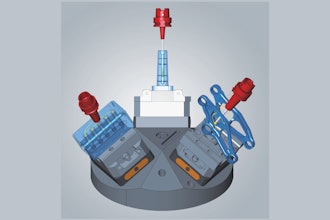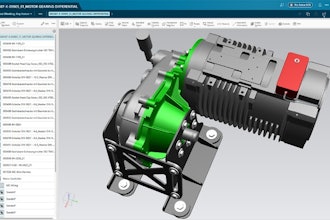Food and beverage manufacturers face significant challenges every day, including competitive prices, varying commodity costs, low margins, food safety/traceability concerns, government regulations and changing consumer tastes. Most best-in-class companies have implemented an integrated Enterprise Resource Planning (ERP) solution to address these challenges.
These ERP systems record all of the day-to-day activities that are mission critical to operate the business, and they have a wealth of information that can be beneficial to strategic and tactical decision-making. However, not everyone within the organization has the expert knowledge to extract that data and convert it to meaningful insight. Without access to this information, it can be difficult to make fact-based decisions.
According to an industry survey, 47 percent of manufacturers recognize the need to become more data-driven to stay competitive, and 27 percent of respondents believe more data is available within their organization than is currently used for meaningful analysis. Key decision-makers often demand convenient access to information when and where they need it. Best-in-class companies are almost twice as likely to have implemented visual discovery methods to simplify decision-making, and they are three times more likely to have implemented analytical capabilities to combine, reconcile and mine data. Business Intelligence and Enterprise Search solutions are two ways to meet this critical need for actionable insight.
Uncovering Data for Better Decisions
Business Intelligence is defined as the transformation of raw data into metrics, Key Performance Indicators (KPIs) and trending information that can be used to enable effective insights in order to facilitate strategic and tactical decision-making to improve overall enterprise performance. These solutions have been in existence for a number of years, allowing organizations to provide dynamic reports that present the end-users with exactly what they want when they want it. Best-in-class companies are 90 percent more likely to implement tools such as Business Intelligence dashboards to improve fact-based decision-making.
Business Intelligence goes beyond reporting by allowing users to interact with the information presented. A personalized dashboard, loaded with intuitive visualizations of the metrics and KPIs, displays valuable insight with the ability to pinpoint areas of opportunity. These dashboards can be tailored easily so that the most appropriate data is presented for each individual stakeholder, all in real-time. Business Intelligence also brings a high level of consistency of information to the executive suite and management offices; everyone views the same information, improving communication, direction and decision-making.
Searching Data for Relevant Insight
Enterprise Search is a newer technology that complements Business Intelligence, providing executives, managers and other stakeholders with the ability to find information stored in the ERP system easily via a browser and search tools. It is defined as technology that relates user queries to many different kinds of information in order to identify relevant, contextualized information, and, in the process, perform light analysis.
Enterprise Search indexes relevant data in the ERP to allow a user to find information without having to be an expert on the nuances of the software. Both busy executives and tech-savvy millennials expect navigation that is more intuitive, similar to what can be found when they open their favorite online search engine. “Google” is now a verb in the Oxford English Dictionary, the most authoritative dictionary of the English language.
By 2018, 30 percent or more of enterprise searches will begin with a question — Who? What? When? Where? How? For example: When was the last time Customer A placed a sales order? How much inventory is available in the Texas warehouse? These answers are provided without the user having to be proficient in the use of the ERP solution, or even logging into the ERP system. Industry analysts predict that enterprise searches will eventually evolve into “insight engines” that apply relevancy methods to describe, discover, organize and analyze data to allow information to be delivered proactively or interactively in the context of the user at timely business moments.
Conclusion
Pulling information from a traditional ERP is much like talking to a teenager; you need to know exactly what questions to ask in order to gather the necessary information. Business Intelligence and Enterprise Search solutions helps extract that powerful data from ERP and puts it into a format to be easily consumed to allow for fact-based decision making. Today’s workforce is also more connected than ever before — a trend that will likely continue as millennials view their work and personal lives as closely intertwined. Business Intelligence and Enterprise Search tools should be accessible at any time — during working hours while at the office or away from the office, as well as outside of normal working hours from mobile devices, with the proper security. Better usage of data for decision-making allows leaders in the food and beverage industry to outperform corporate expectations by as much as 15 percent, as well as lowering costs and improving productivity.
Jack Payne is VP, Product Management & Solutions Consulting for Aptean





















